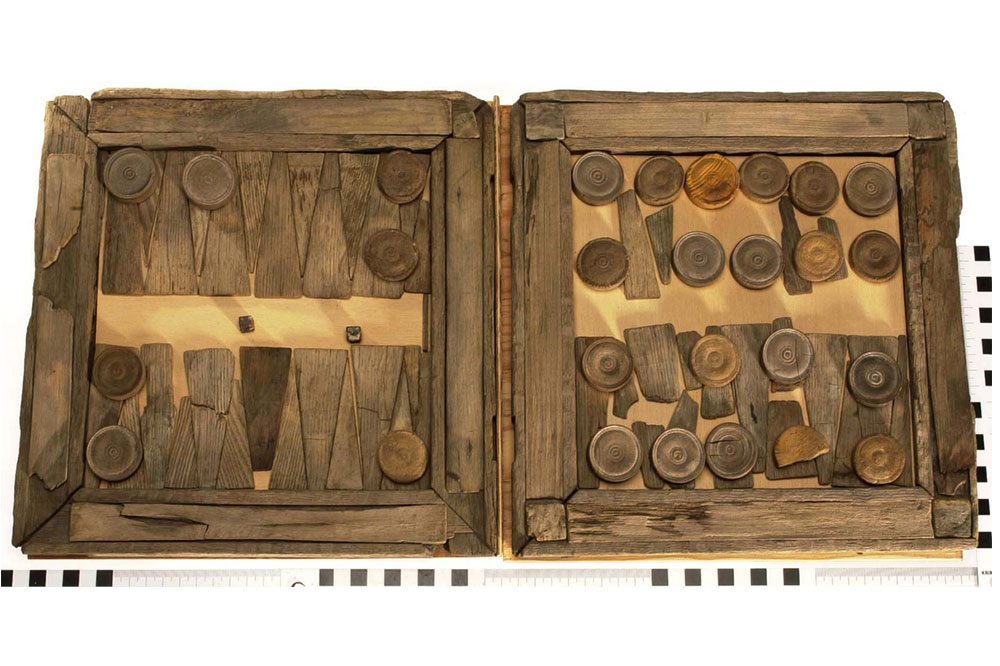When Vasa was salvaged a well-preserved board game was found at the rear of the ship. The find revived interest in the 400-year-old game of Swedish Tables, a variant of backgammon. The Swedish-Tables Association of the Vasa Museum was founded by The Friends of the Vasa Museum in 1993.
Games take place in the museum every week and anyone can play. The wooden travel set found on Vasa is displayed in the Life on Board exhibition at the museum.

Swedish Tables is played on a standard backgammon board, with two dice, fifteen white checkers and fifteen black checkers. The board has twenty-four triangular fields, so called points, along the border. The fields are alternately dark and light, to make moves easier. The board usually has a wall or bar in the middle, which divides the board into four quarters with six points each quarter.
The artistic appearance of traditional Swedish boards is slightly different from that of modern backgammon boards, see the figure below. The checkers are usually around 50 milli-metres (2 inches) in diameter. The board is rectangular, with the long sides twice as long as the ends. The bar is split in two separate parts. The dark triangular fields are usually red, the light ones yellow, and the background of the board green.
The rules
The rules of Swedish Tables were adopted at the annual meeting of
the Swedish-Tables Association of the Vasa Museum (Vasamuseets Brädspelsvänner), Stockholm, on February 26, 2003.
Read the rules in the pdf-document below: